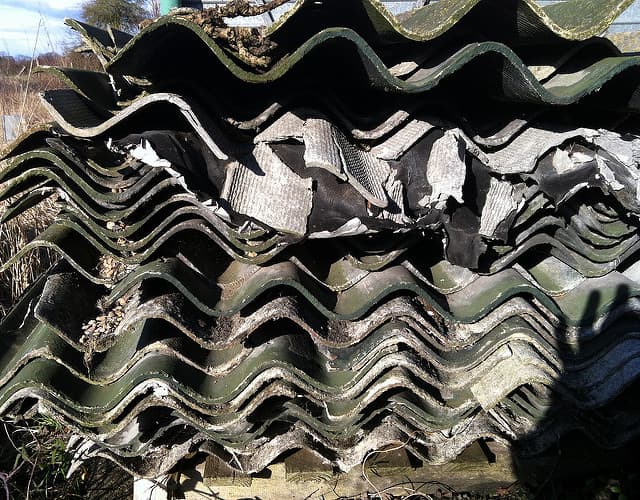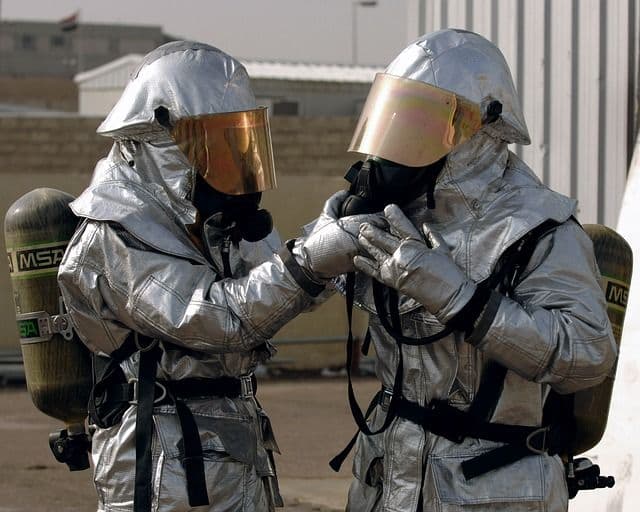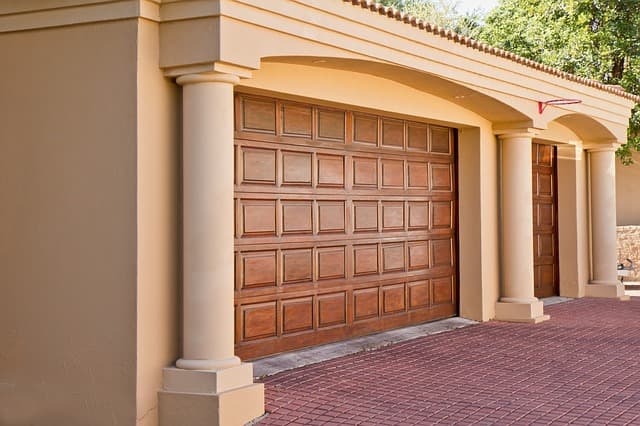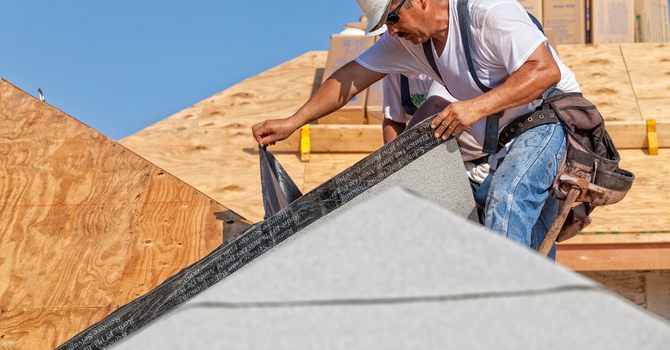Are you looking for a contractor?
Submit our quick form and get quotes now!
Table of Contents
8 min read
How Does Asbestos Disposal Work?


8 min read
How Does Asbestos Disposal Work?
Interior renovationsHow Does Asbestos Disposal Work?
Although asbestos is no longer permitted in the construction or renovation of current homes, it is still possible to find asbestos today in several old houses. The harmful effects of exposure to asbestos are no longer a secret, which is why asbestos removal is necessary for certain circumstances. But what is asbestos removal and when is it necessary?
Here are the key things to know about asbestos removal
What is Asbestos?
Asbestos is a naturally occurring mineral that was mined primarily in Canada. Asbestos was commonly used in the construction of homes leading into the 1970s in several different forms. However, it was quickly learned that this mineral is dangerous and from thereon, homeowners became worried about its use. Asbestos is linked to lung diseases that are caused by breathing in its fibres, as it irritates the lungs and can lead to scarring.
In the most serious of cases, asbestos can lead to a fatal type of lung cancer. In homes that were built before 1975, it can be found in materials such as thermal insulation, attic insulation, vinyl floor tiles, linoleum floor tiles, window caulking and glazing, fibre cement siding as well as some forms of textured paint.
Unfortunately, there is no obvious way to see asbestos with the naked eye. However, if you find certain old materials around your home are deteriorating and you’re concerned about it, it's important to act quickly and remove them. As asbestos is a dangerous substance, it's recommended that you take the proper safety precautions and hire an asbestos removal specialist to discard the mineral properly.
When Asbestos removal is necessary

Contrary to popular belief, asbestos removal is not always required when asbestos is found to be present. Indeed, it is not so much the presence of asbestos that is the problem, but rather the inhalation of its fibres. In order to avoid any risk related to this situation, it is therefore crucial never to move or remove materials containing this harmful product by yourself. So, if the material remains in place and it does not crumble over time, you can safely keep it. Note, however, that a deterioration of the material will require you to have it removed completely to replace it in accordance with the new requirements.
The Asbestos Removal Process
Guidelines in place for asbestos removal are there to protect contractors who could meet with the substance on a regular basis. However, homeowners should be cautious and informed regarding the removal process. Finding asbestos in one’s home is common during home renovation projects, especially in situations where testing for the substance is required to be approved for a work permit.
It's safe to have asbestos in the home when it's undisturbed or contained, however, even touching the mineral can lead to the suspension of fibres into the air. If you're working on a home renovation project and feel as though you have come across asbestos, stop all work immediately.
A qualified asbestos specialist must survey the area and take samples that need to be analyzed at an accredited lab. If specialists do discover that there is asbestos hidden in the materials of your home, it will need to be removed.
The price and details of asbestos removal will greatly depend on the scope of work, the risk level, access to the material, the amount of waste generated as well as the timeline. The most cost-effective way to remove asbestos is to have the suspect material surveyed as soon as possible.
This way, the scope of work involved and related costs will all be evident to you. It is not possible for the homeowner to complete the sampling process on their own, and serious precautions are taken by professionals during sampling.
If it has been determined that you have asbestos in your home, professionals must come in to remove the substance. Asbestos waste is bagged or encapsulated and can be disposed of in specifically classed landfills. The bagged waste must be buried and covered immediately upon arrival at the landfill, and it's generally recommended that advanced arrangements are made with the landfill in order to ensure that this occurs. Before the beginning of the work, all surfaces should be dust off.
Again, if you are taking on a home renovation project and suspect the presence of asbestos in your home, make sure you contact a professional as soon as possible to avoid the substantial risks involved with this substance.
According to the Commission des normes, de l'équité, de la santé et de la sécurité du travail, here are some examples of asbestos removal work and the degree of risk it presents:
Risk level | Work |
Low risk |
|
Moderate risk |
|
High risk |
|
Regulations that govern the removal of asbestos
Here’s a direct breakdown of the asbestos removal protocols that must be followed.
For low-risk work:
Wearing a reusable half-mask with a cartridge with a HEPA filter or a disposable mask;
The disposal of waste in leak-proof containers.
For work presenting a moderate risk:
Wearing a cartridge mask with HEPA filter (a full mask in this case);
The use of disposable protective clothing, gloves and protective plastics for boots (both equally disposable);
Avoid the use of power tools on friable materials.
For high-risk work:
Wearing an assisted ventilation mask with a HEPA filter;
The use of disposable protective clothing;
The use of two changing rooms (one for street clothes and another for work clothes) and the arrangement of a shower room between these changing rooms;
Ensure the protection of the ventilation system;
Benefit from the supervision of a consultant on the site.
Decontamination of the premises
Now is the time to start the third stage, where the contaminants are removed. As in the previous step, two options are available. The first is dismantling, which consists of first removing materials that have come into contact with asbestos, and then doing the same with materials containing asbestos.
In order to minimize the release of asbestos particles into the air, some contractors opt for wet removal. Before removal, the contaminated material is soaked in water and removed. The surfaces with which the material is in contact are then brushed and sucked.
Verification of the structure
Before terminating the construction site, the condition of the structure is examined by the supervisor and finally, by an independent inspector responsible for validating the evaluations previously carried out.
Dismantling of installations used during asbestos removal
If the inspection does not reveal any problems, the first layer of containment may be removed. Thereafter, a 48-hour break period is observed to allow the remaining asbestos dust to settle on the ground. A test is carried out to measure the dust rate present in the decontaminated area, which must be less than 5 fibres/litre of air. Finally, the air extraction devices and barriers used during containment are removed.
Waste disposal: a procedure for each category
Depending on the waste that remains as a result of the work, a special disposal procedure will have to be followed. The types of materials are divided into three categories:
Category 1: Filters, polyene films (films used as protective and sealing films)
Category 2: Any substance or article that cannot be decontaminated
Category 3: Any enema decontaminating material
The first two categories of so-called "hazardous" waste will be transposed through the transfer of a first bag that will be cleaned before being placed in a second bag (which will also be washed), to be finally placed in a third bag. The latter will allow all contaminated materials to be transported to an appropriate treatment centre for burial or inertage.
Waste belonging to the latter category will be cleaned in the waste system previously installed and then disposed of as ordinary waste would be.
How is asbestos recycled?
Recent developments have made it possible to turn asbestos products into non-toxic materials. However, the recycling of asbestos is complex and costly.
The most established method currently works by heating asbestos materials in a sodium hydroxide solution that will break down the asbestos. The temperature of this solution must reach 1,250 degrees Celsius. This process breaks down asbestos fibres and leaves a non-hazardous glass. This glass can then be used to create stoneware or ceramic as well as for aggregate for roadways. A less commonly used asbestos treatment uses microwave thermal energy to convert the material to ceramic bricks or porcelain tiles.
These methods help to reduce asbestos waste anywhere between 50% and 90%, depending on the type of product being recycled. This is hugely beneficial for landfills and reduces disposal costs.
Legal obligations for asbestos removal
The Regulation respecting occupational health and safety makes it mandatory to comply with the measures introduced by the Safety Code for the construction industry for the control of asbestos dust caused by the removal of contaminated materials.
For any work likely to release asbestos fibres, the employer is obliged to provide training to his workers on the appropriate methods to be followed in carrying out asbestos removal and on the risks arising from the inhalation of asbestos fibres.
Moreover, the CNESST specifies that for "all removal or demolition work involving asbestos carried out on a construction site, a certificate that the workers have been trained and a description of the work methods and procedures that will be used must be provided to the CNESST with the notice of opening of the site". However, this obligation does not apply to a self-employed contractor.
Any employee involved in an asbestos removal operation must also obtain information relevant to the identification of asbestos-containing materials, as well as to the management of the equipment and clothing that will be used in the process.
Get 3 quotes for your asbestos removal project
RenoQuotes.com can help you get quotes for your asbestos removal project. If you submit your project to us, we’ll put you in contact with the most suitable contractors for you. Fill in the form on our homepage (only a few minutes), and you will receive quotes from trusted professionals.
Dial 1-844 828-1588 to speak with one of our customer service representatives.
Last modified 2023-11-07
Looking for something else?
Related articles
The latest industry news, interviews, technologies, and resources.

Amanda Harvey • 07 Nov 2023
A fence protects the exterior of your home, and when well maintained, can add some serious curb appeal to any property. Since this structure is left outside day and night, it comes up against some severe conditions: snow, rain, sleet, heat, both freezing and melting water. Therefore, it's only natural that the paint on an outdoor fence should easily wear and fade.

RenoQuotes.com • 14 Mar 2024
A new renovation is an exciting venture, and most of us are ready to dive right in and get started as soon as possible. Of course, being a homeowner doesn’t require being great at construction, architecture or the like. Therefore, when working on a new project, it’s necessary to find the right contractor for the job!

N/A • 07 Nov 2023
A few months ago, we shared an article about the 8 unique ways you can divide your space. Among the examples, some featured vertical wood slats which basically form a panel that doesn't block sunlight, and that's meant to divide your space. This effect can be created using a variety of materials, from wood to metal.

N/A • 07 Nov 2023
Arriving home at the end of a long day of work will have any homeowner looking for ways to make their life easier. An electric garage door is one of the ways that can simplify life, allowing your car to glide into the garage with the touch of a button. However, as with any form of technology, there is plenty to consider before going forward with this purchase.

Cynthia Pigeon • 07 Nov 2023
Roofing underlayment isn’t a luxury. It’s the one element that guarantees a decent and weather-protected structural design.